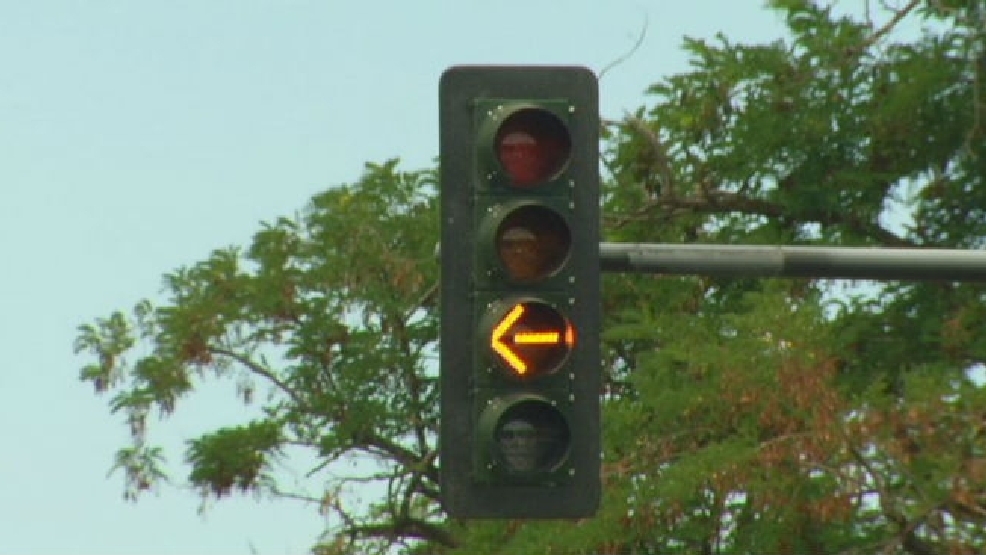Ever approach an intersection and find yourself bathed in the eerie, intermittent glow of a flashing yellow traffic signal? This isn’t just a random malfunction; it’s a deliberate signal, a communique from the municipal engineering department, conveying a specific directive. Deciphering that directive is paramount to ensuring your safety and the safety of those around you. Let’s delve into the nuances of this ubiquitous, yet often misunderstood, traffic control device.
The Primary Directive: Proceed with Caution
At its core, a flashing yellow light is an advisory signal. It’s not a command to stop, as a red light would dictate. Rather, it politely, yet firmly, suggests that you exercise heightened diligence. A flashing yellow light mandates that drivers reduce their speed and proceed through the intersection only when it is safe to do so. It’s a subtle, yet crucial, distinction. Think of it as the traffic signal equivalent of a gentle prod rather than a peremptory halt.
Yielding the Right-of-Way: A Critical Consideration
The imperative to proceed with caution invariably necessitates yielding the right-of-way. This means allowing pedestrians, cyclists, and other vehicles already within the intersection to pass before proceeding yourself. Failure to yield can result in collisions and subsequent legal entanglements. The onus is on the driver approaching the flashing yellow light to ensure the intersection is clear before venturing forth.
Understanding the Context: Where You’re Likely to Encounter Flashing Yellow Lights
Flashing yellow lights are strategically deployed in various scenarios, each requiring specific contextual awareness. Consider these common applications:
- Low-Traffic Intersections: Often found at junctions with reduced traffic volume, especially during off-peak hours or late at night. The flashing yellow replaces the standard red-yellow-green cycle, streamlining traffic flow and minimizing unnecessary stops.
- School Zones: Frequently employed during school hours to alert drivers to the increased presence of pedestrians, particularly children. These zones require heightened vigilance and reduced speeds.
- Construction Zones: Deployed to manage traffic flow around construction sites, often indicating lane closures or altered traffic patterns. These areas demand meticulous attention and adherence to posted signage.
- Malfunctioning Traffic Signals: A flashing yellow light may also indicate a temporary malfunction of the regular traffic signal. In such cases, treat the intersection as an uncontrolled intersection, exercising extreme caution.
The Art of the Safe Passage: Practical Strategies
Navigating an intersection governed by a flashing yellow light demands a proactive and deliberate approach. These strategies can significantly enhance your safety:
- Reduce Speed: Approach the intersection at a speed that allows you to react to unexpected events. Excessive speed diminishes your reaction time and increases the risk of collisions.
- Scan the Intersection: Thoroughly scan the intersection for pedestrians, cyclists, and other vehicles. Pay particular attention to crosswalks and blind spots.
- Anticipate Potential Hazards: Be prepared for unexpected movements from other road users. Assume that other drivers may not yield the right-of-way.
- Maintain a Safe Following Distance: If following another vehicle, maintain a safe following distance to allow for adequate braking time.
- Signal Your Intentions: Use your turn signals to clearly communicate your intended direction of travel. This provides other road users with valuable information.
The Legal Ramifications: Ignoring the Warning
While a flashing yellow light doesn’t mandate a complete stop, disregarding its warning can have significant legal repercussions. Failure to yield the right-of-way can result in traffic citations, fines, and even points on your driving record. Moreover, if a collision occurs as a result of your negligence, you may be held liable for damages and injuries. The legal ramifications serve as a potent reminder of the importance of heeding the warning conveyed by the flashing yellow signal.
Beyond the Basics: Advanced Considerations
The intricacies of flashing yellow lights extend beyond the fundamental principles. Consider these advanced considerations:
- Flashing Yellow Arrows: Some intersections utilize flashing yellow arrows to indicate permissive left turns. This allows drivers to turn left after yielding to oncoming traffic and pedestrians.
- Dark Mode Activation: During periods of extremely low traffic volume, some municipalities implement “dark mode” activation, where all traffic signals default to flashing yellow lights on the major thoroughfare and flashing red lights on the minor streets.
- Adaptive Traffic Control: Modern traffic management systems are increasingly incorporating adaptive traffic control technologies that adjust signal timing based on real-time traffic conditions. Flashing yellow lights may be utilized in conjunction with these systems to optimize traffic flow.
A Symphony of Signals: Contextual Awareness and Defensive Driving
Navigating the urban landscape is akin to conducting a symphony of signals. Each traffic control device, including the flashing yellow light, plays a crucial role in maintaining order and ensuring safety. By cultivating contextual awareness, adopting defensive driving techniques, and adhering to the fundamental principles outlined above, you can confidently navigate intersections governed by flashing yellow lights, transforming a potential challenge into a seamless and safe passage.
In summation, the flashing yellow light is not an enigma to be feared, but a subtle directive to be respected. Understand its purpose, heed its warning, and proceed with caution. Your safety, and the safety of others, depends on it.









Leave a Comment